
Finding New Spaces Together
‘Vádye Eshgh (The Valley of Love)’ is a collaboration between Second Generation Collective and Abdul-Rahman Abdullah weaving through themes of beauty, diversity and the rebuilding of identity.

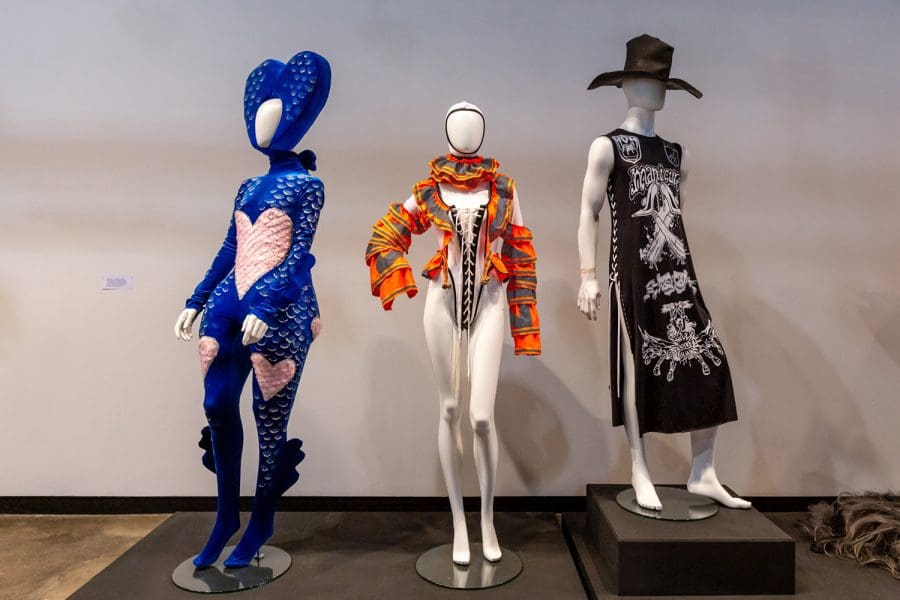
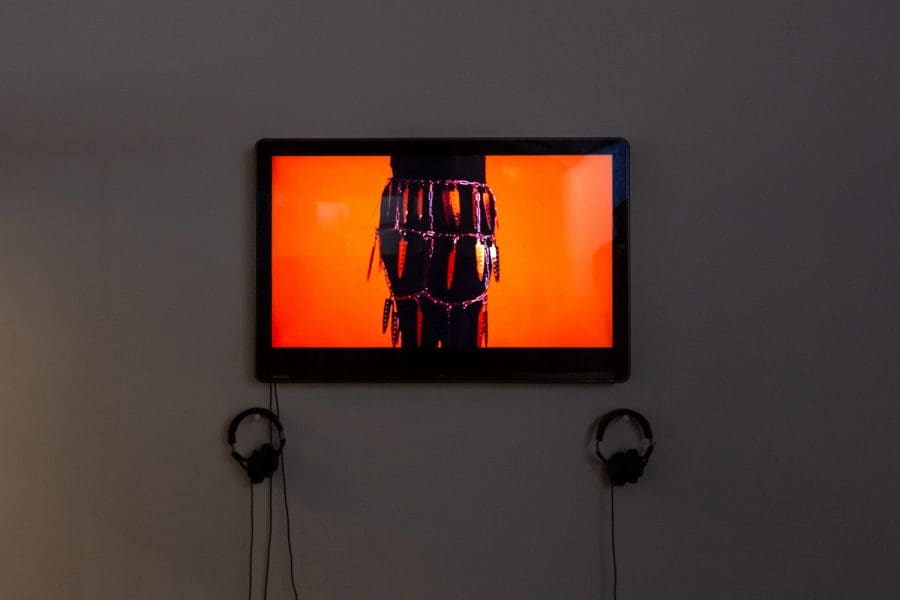
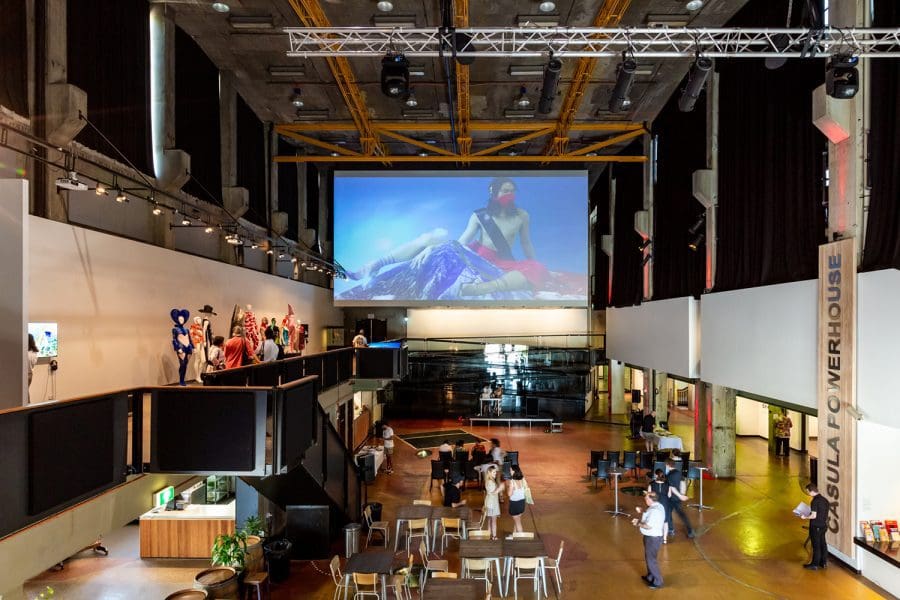

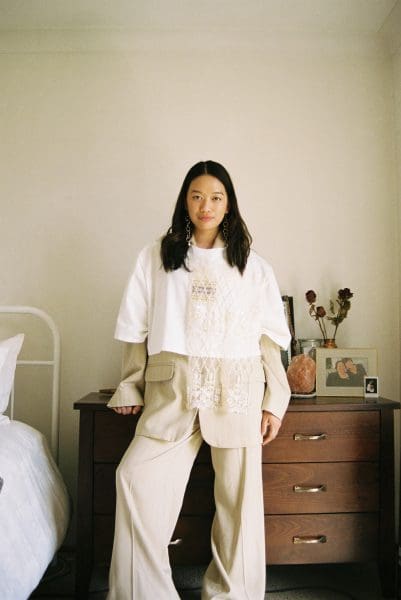
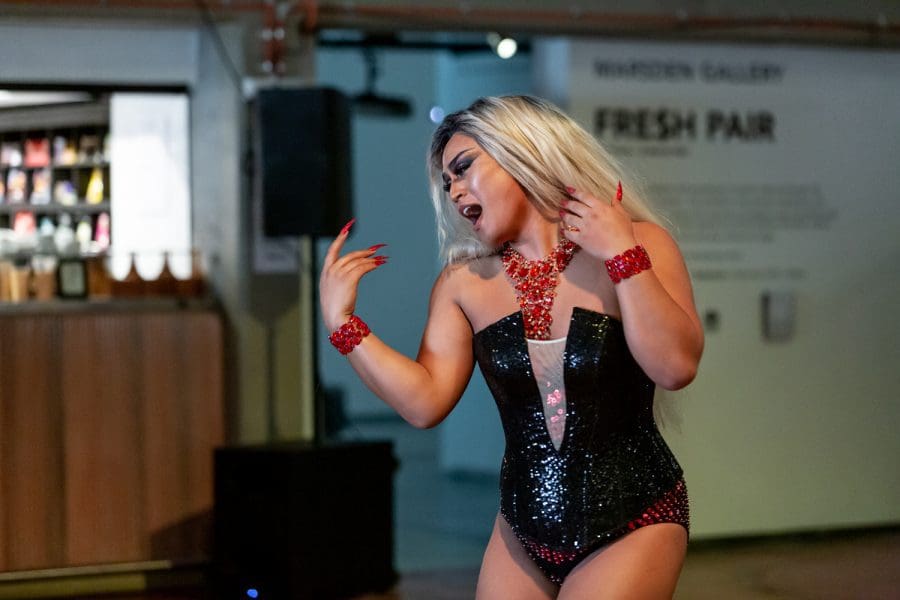
In the group exhibition Hi Vis, fashion is used to arrest attention and focus it onto complex political ideas. This show at Casula Powerhouse Arts Centre presents a mix of video artworks alongside wearable sculpture, outfits worn by performance artists, and fresh fashion from Western Sydney.
Some works, like JD Reforma’s MISS ANTHROPY, 2020, use spectacle and pageantry. The five-minute video was commissioned for Casula and is shown on two screens: one on the mezzanine with the rest of the exhibition, and another supersized projection over the main Turbine Hall. The giant scale suits the work, which shows Reforma with his legs wrapped around a volcano. He strokes it suggestively, dressed in stilettos as well as a face mask and a sash that reads “Let It Reign.” The work layers ideas around sexuality, power and anthropogenic environmental change, but in all of this, it’s the position of Reforma’s body that is most telling: part of the landscape, not controlling it but still active.
Angela Tiatia also uses glamour to powerful ends in her 2016 video Woman’s Movement. This work takes its cues from music video clips, showing three women in black leotards bouncing around with pink-painted props like bananas, exercise balls and machine guns. But as the work progresses, exhaustion begins to show. They fall out of sync.
Matt Stegh’s fashion designs are just as vibrant. Produced under the name Haus of Helmutti, his works have been a part of queer performance and party culture for over a decade. Some of the most interesting in Hi Vis play with silhouettes, presenting hip-heavy or swollen shapes in lush velvet and sickly sweet pink. Another, Odyssey ‘o Fehuluni, 2018-2019, is shaped like a shark and draped in delicious Rapunzel-length hair. Many of these pieces have been made for performers and artists like Bhenji Ra and Justin Shoulder. They demand to be seen, but also serve as beacons for others who might not fit traditional moulds. They also point to the way we are all constantly coding and signalling meaning through our bodies and clothing.
This idea is taken further in the fashion designs, collages and campaign photographs by emerging designer Nicole Oliveria. Her pieces mix vintages and reference points (for example a utilitarian parka is embellished with floral jacquard) to rethink how an identity rooted in different cultures might be expressed. Leila el Rayes also uses juxtaposition, creating wearable pieces from chains and knife blades that are both delicate and menacing. Hi Vis also includes Joan Ross’ video animation, BBQ this Sunday, BYO, 2012, which takes hi vis yellow – a colour that’s now impossible to escape – and deploys it as a metaphor for the ongoing impact of colonisation.

Curator Luke Létourneau has had to make some difficult decisions here. Many other Australian artists use the coded meanings in dress to make a point. One way he has focused Hi Vis is by selecting artists from Western Sydney, like the fashion designer Oliveria and the performance artist Kilia, who presented a multi-act work at the exhibition opening. Létourneau has also focused on fashion as a choice and empowering mode of self-expression. In this, Hi Vis is a declaration that fashion is not just a private matter, but a conversation that takes place in a social – and very political – arena.
Hi Vis
Casula Powerhouse Arts Centre
1 February – 15 March